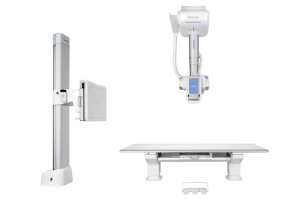by
Lauren Dubinsky, Senior Reporter | May 02, 2018

Samsungâs GC85A with S-Vue
Samsung announced last Tuesday that it’s committed to lowering radiation dose exposure across its entire digital X-ray portfolio.
One of the ways the company has demonstrated that is with the introduction of its GC85A fully-digital X-ray system.
That system delivers the same image quality as the predicate device, but with half the radiation exposure. It’s able to do that because of its image post-processing engine S-Vue 3.02, which received FDA clearance last November.



Ad Statistics
Times Displayed: 2147
Times Visited: 10 Fast-moving cardiac structures have a big impact on imaging. Fujifilm’s SCENARIA View premium performance CT brings solutions to address motion in Coronary CTA while delivering unique dose saving and workflow increasing benefits.
“The new technology features a low dose post-processing chain which is a multi-resolution-based de-noising method for preserving the structural and anatomy information,” Philip Sullivan, president and CEO of NeuroLogica, a subsidiary of Samsung, told HCB News. “The resulting performance will allow our customers to lower their protocols to achieve the same level of diagnosable images.”
Patients who undergo a chest X-ray with GC85A are subject to eight microsieverts of radiation, which is equivalent to the average dose exposure during a three-hour flight.
Dr. Hetal Patel, chief of radiology at ARMC-Cone Health in North Carolina, recently participated in Samung’s Low Dose Study, in which he evaluated ten X-rays and found that the overall image quality was “excellent.”
“The reduced-dose X-ray was either of comparable quality or better quality, and I would advocate for all chest X-rays to be done using this methodology,” he said in a statement.
In March, Samsung received Low Dose clearance from the South Korea Ministry of Food & Drug Safety and CE mark for applying dose reduction technology in its other X-ray models.
The company is also focused on lowering CT dose. It has technology and programs in place for XR-29 compliance, automatic exposure control, beam efficiency and low noise data acquisition.
Samsung also uses special image reconstruction kernels and the adaptive noise reduction to provide low-dose lung screening, ensures its mobile CTs are internally lead shielded, and deploys advance post-processing solutions to reduce the need for repeat scanning.

